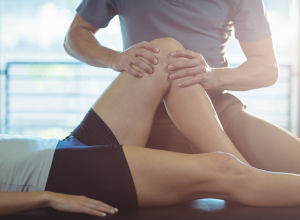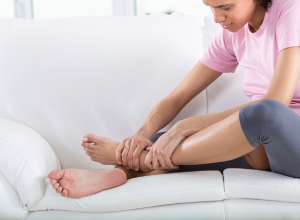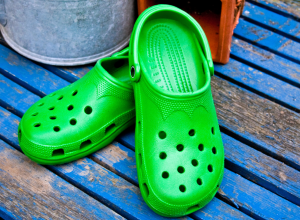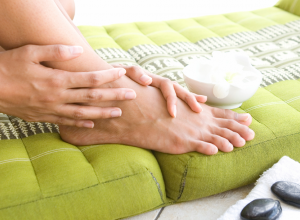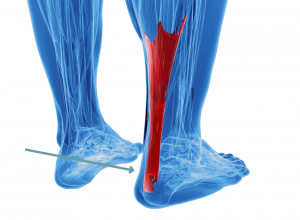
Achilles Tendonitis
Achilles tendonitis (sometimes spelled tendinitis) is an inflammation of the Achilles tendon that most often occurs when the tendon has been overused or has suddenly experienced an increase of physical activity.
Symptoms of Achilles Tendonitis
Symptoms of Achilles tendonitis include pain, aching, stiffness, tenderness and discomfort in the area above the heel that increases when stretching or standing on your toes. People with Achilles tendonitis often have difficulty flexing the heel (calcaneous bone) and calf (which consists of the gastrocnemius muscle and soleus muscle).
There are two types of Achilles tendonitis: noninsertional, which is when the fibers in the middle portion of the tendon start to break down with tiny tears, and insertional, which is when fibers in the lower portion of the tendon start to break down with tiny tears.
If Achilles tendonitis is not treated, it could lead to Achilles tendonosis, which is when the inflamed Achilles tendon begins to degenerate, lose its organized structure, develop microscopic tears and possibly rupture.
Achilles Tendonitis Causes
As stated above, the most common cause of Achilles tendonitis is an overuse of the tendon or a sudden increase in physical activity that stresses or damages the tendon. The stress begins breaking down the Achilles tendon, creating tiny tears that the body is unable to repair during continued activity. This can alter the construction of the tendon and create prolonged pain.
Common activities that lead to Achilles tendonitis and Achilles ailments include engaging in physical activity without warming up, wearing high heels that stress the Achilles tendon and suddenly engaging in increased physical activity without slowly building toward your fitness goals. Over pronation, bone spurs and gout can also lead to Achilles tendon problems.
Treatment and Prevention of Achilles Tendonitis
After proper diagnosis by a doctor or podiatrist, Achilles tendinitis and Achilles tendinosis may be treated in a variety of ways, including a cast or walking boot to reduce the demands on the foot and leg, oral medications to reduce pain and swelling, application of ice to reduce swelling, wearing a splint to stabilize the tendon, physical therapy and/or exercise to stretch the tendon, rest and supportive shoes with orthotics. Training modification is also essential, as the body needs time to heal. With proper treatment, Achilles tendonitis can be healed within a couple of months. If left untreated, it can lead to chronic pain that gets worse with time or a tendon rupture, which is called Achilles tendonosis. Therefore, it is important to seek treatment at the first sign of pain in your Achilles tendon.
Notice concerning medical entries:
Articles having medical content shall serve exclusively for the purpose of general information. Such articles are not suitable for any (self-) diagnosis and treatment of individual illnesses and medical indications. In particular, they cannot substitute for the examination, advice, or treatment by a licensed physician or pharmacist. No replies to any individual questions shall be effected through the articles.

